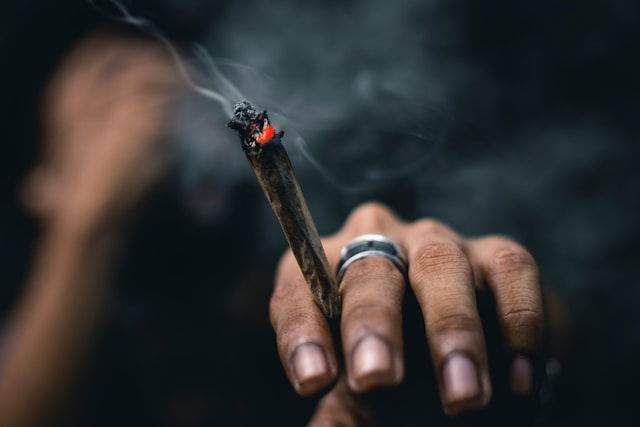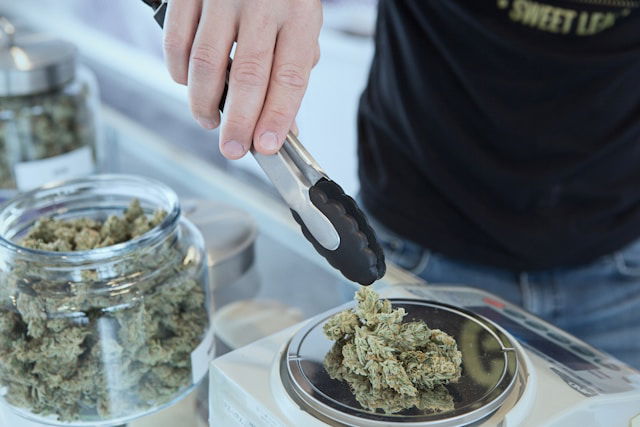Marijuana reclassification is being widely discussed as Donald Trump recently addressed its legal status, raising hopes of a major shift in US law. For decades, cannabis has carried a heavy stigma under federal regulations, even though more states continue to legalize it for both medical and recreational purposes.

Marijuana, also known as cannabis or weed, is still considered illegal under federal law. Despite this, most states across the US have already legalized it for medical purposes. Many people assume the plant is now completely legal, but that is not the case nationwide.
As of now, 24 states allow recreational use. While this has changed how people view marijuana, carrying it is still a legal risk depending on where you are. The differences between state and federal laws often leave people confused about what is permitted.
Marijuana is currently placed under Schedule I drugs. This classification was made in the 1970s, and it was labeled as highly addictive and dangerous. Under this category, it is considered to have no accepted medical use. That position has remained unchanged for decades.
The Department of Justice has the power to request reclassification, but it must also secure agreement from the White House Office of Management and Budget. If successful, marijuana could move to Schedule III. This category comes with fewer restrictions and recognizes potential medical benefits.
The Effects of Marijuana on the Body
The effects of marijuana depend on the strain, the method of use, and the dosage. Each factor plays a role in how quickly and how strongly it influences the body and mind.
When marijuana is smoked, the effects can begin within two to ten minutes. This is because THC, the psychoactive compound, enters the bloodstream through the lungs and quickly reaches the brain.
When taken in the form of edibles, the process is much slower. The body needs between thirty minutes and two hours to digest and process the compounds. This delay often leads inexperienced users to consume more than intended, which can result in a stronger and longer-lasting high.
Once THC is active in the body, it can increase the heart rate by 20 to 50 beats per minute. This heightened rate may continue for several hours. Another physical change that often occurs is redness in the eyes, caused by blood vessel dilation.
By around the twenty-minute mark, smoked marijuana typically reaches full absorption. Edibles, however, continue to be processed through the liver, which takes more time. Once the compounds reach the brain, users often report feelings of relaxation and euphoria.
Not everyone has the same response. Certain strains or personal sensitivity may lead to anxiety or even sudden panic. This highlights how varied the experience of marijuana can be.
Common Experiences While Using It
Many users report an increase in appetite, commonly known as the munchies. THC stimulates the part of the brain linked to smell and taste, which makes food seem more appealing. Even those who have just eaten may feel hungry again.
After about thirty minutes, most users reach the peak of their high. This state can last up to six hours, depending on the dose and the way it was consumed. During this period, judgment and decision-making may be impaired. In fact, some effects on focus and clarity can last up to twenty-four hours.
Different methods of consumption also change the experience. Dabbing, which uses concentrated cannabis through pipes or bongs, often produces a much stronger effect. However, the high is shorter, lasting between one and three hours.
The Push Toward Marijuana Reclassification

In May, the Justice Department issued a statement confirming that the Attorney General had submitted a notice of proposed rulemaking. This step began the formal process of reviewing marijuana’s status under the Controlled Substances Act.
The statement highlighted the history of marijuana’s classification, noting it has been a Schedule I drug since the Controlled Substances Act was enacted in 1970. The push for change grew stronger in October 2022, when President Biden requested a scientific review of marijuana’s federal scheduling.
Health and Human Services carried out this review and submitted recommendations in August of the following year. Based on these findings and legal guidance from the Justice Department’s Office of Legal Counsel, the Attorney General exercised authority to begin the reclassification process.
If the process concludes successfully, marijuana could move to Schedule III. This would recognize its medical uses and reduce barriers for research and legal access.
Trump’s Response to Marijuana Reclassification
On August 11, Donald Trump directly addressed questions about the potential reclassification of marijuana. He stated that the issue was under review and that opinions were divided. According to him, some people strongly support it, while others remain firmly against it.
Trump mentioned concerns that marijuana may cause harm, especially to children and older adults. However, he did not dismiss the possibility of change. Instead, he confirmed that a decision would be made within weeks to make what he called the right determination.
If marijuana moves from Schedule I to Schedule III, the impact would be significant. For everyday users, it would likely become easier to access legally. This shift could reduce the reliance on black market sources, making the purchase process safer and more regulated.
Dr. Carl Hart, a psychologist and neuroscientist at Columbia University, explained to BBC News that legalization would push more people toward legal markets. According to him, the black market would decline naturally because legal access is simpler and more reliable for consumers.
A lower classification would also open new research opportunities. Scientists have long faced restrictions when studying marijuana due to its Schedule I status. Reclassification would allow for deeper medical research and a broader understanding of its effects.
The debate on marijuana reclassification is not just about legality. It is also about public health, research opportunities, and economic impact. States that have legalized cannabis have seen new business growth, job creation, and tax revenue. Federal reclassification could expand those benefits across the country.
At the same time, reclassification would not automatically mean full legalization. Cannabis would still be regulated, and federal law would continue to set boundaries. However, the step toward Schedule III would mark one of the biggest policy shifts in decades.
As the discussion unfolds, Americans are watching closely. The outcome will shape the future of cannabis use, research, and business across the United States. Whether people welcome or oppose the change, the conversation around marijuana is stronger than ever.
